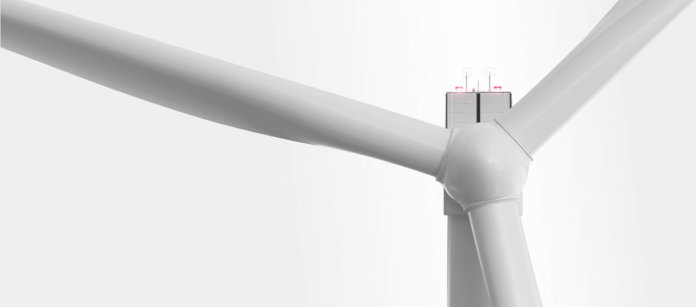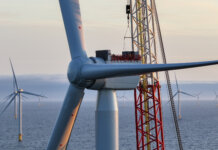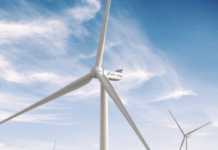Vestas has introduced the V138-3.0 MW wind turbine, which is based on the company’s scalable EnVentus platform.
The new turbine follows the launch of the EnVentus platform in January, which included the V162-5.6 MW and V150-5.6 MW turbines.
According to Vestas, the V138-3.0 MW is globally applicable but is purposely designed to maximize performance under market-specific conditions. By combining the V138-3.0 MW turbine’s 138-meter rotor with an 83-meter tower, the new turbine targets U.S. height constraints, and with low sound levels, it is suitable for low-wind sites in sound-sensitive markets such as France. Vestas claims the turbine features the industry’s largest swept area – 14,957 square meters – for a turbine under 152.4 meters (tip height).
“This turbine is a perfect match for the North American market, where higher certainty in annual energy production at park level will become increasingly important for our customers to secure project financing and ensure profitability in a post-[production tax credit] market,” notes Chris Brown, president of Vestas’ sales and service division in the U.S. and Canada.
Vestas says EnVentus is designed to meet the challenges customers are facing amidst changing energy policy and grid requirements. Through increased standardization of components while ensuring turbine optimization, the EnVentus variants are designed to help efficiently ensure customers’ competitiveness in a wide range of market conditions.
Anders Vedel, Vestas’ chief technology officer, says, “With the introduction of the V138-3.0 MW, we take another step forward in versatility and scalability of functional systems, demonstrating modular product development’s huge potential and how it supports our vision to become the global leader in sustainable energy solutions. I’m proud that by utilizing many of the same components as the first two turbines, we can introduce the V138-3.0 MW to meet customer requirements while lowering the levelized cost of energy and optimizing the value chain.”
Prototype installation is expected by the second half of 2020, while serial production is scheduled for the first half of 2021.




